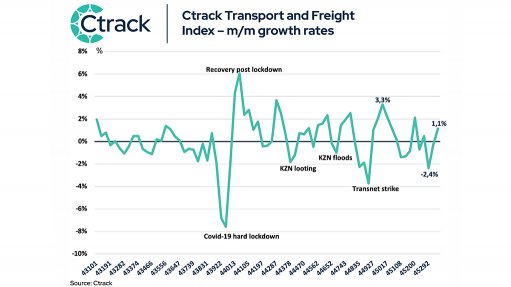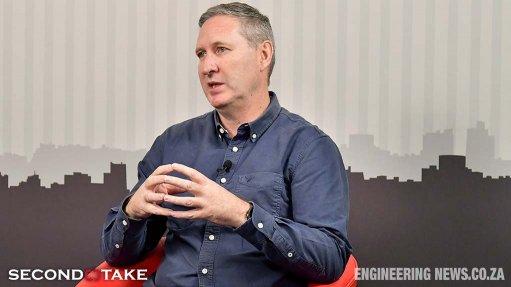Tips from the South African Bureau of Standards to keep cool in buildings, during summer
This article has been supplied as a media statement and is not written by Creamer Media. It may be available only for a limited time on this website.
Summer months in South Africa can be hot and uncomfortable. It may be helpful to draw on some guidelines that is contained in South African National Standards, for keeping cool while you are in a building.
“The way a building is heated and cooled can be influenced by many characteristics such as the climatic conditions, geographical location, proximity to natural shade such as trees, location of the building to water sources, humidity factors, ventilation, construction materials used in the building, the amount of sun that the building is exposed to, are a few examples. There are several national standards that provide technical specifications for ensuring energy efficiency which includes elements of heating and cooling in buildings. In addition to the guidelines, South Africans are encouraged to hydrate and to be out of the sun during 11h00 and 15h00 when the sun is at its hottest,” says Jodi Scholtz, Lead Administrator of the South African Bureau of Standards.
These guidelines are adapted from SANS 10400XA: Energy Usage in Buildings and SANS 13742: Thermal performance of buildings – calculation of internal temperatures of a room in summer without mechanical cooling – simplified methods.
- Increase the efficiency of cooling indoor spaces by fixing roofs, cracks or gaps in windows, doors or any space in which heat can be transferred in, or cool air can be let out
- The heat transfer from metal roofs can be minimised through the correct installation and insulated materials used
- A light coloured roof reflects more heat than a dark coloured roof and will keep buildings cooler
- Roof lights and windows should be sealed to prevent air leakage or heat transfer
- Increase the shade to block out the heat from the sun by using reflective materials or blinds, shutters, door and window seals, curtains - on windows or doors that face the sun
- Ventilate indoor spaces by opening the windows or doors on the side/s of the building that is in shade, however if the heat from outside is higher than that inside the house, it is advisable to not let the heat transfer in
- If some parts of the building are cooler than others during the day and if you are able, try to insulate and/or inhabit that part of the building during the hottest parts of the day. This will be useful for buildings that do not have air conditioning
- Rooms that have a lot of carpets or furniture, have a low heat capacity and may be hotter than other rooms
- Rooms closer to the ground may be cooler than those closer to the buildings ceiling
- Maximise natural ventilation when it is cooler in the evenings and early mornings
- Chimneys or flues can be closed with a damper or flap, which will help to keep the heat out
- Set the air conditioner thermostat between 20oC and 24oC
- If the air is too dry, humidity equipment may be used. The humidity range is between 30-60%
Comments
Press Office
Announcements
What's On
Subscribe to improve your user experience...
Option 1 (equivalent of R125 a month):
Receive a weekly copy of Creamer Media's Engineering News & Mining Weekly magazine
(print copy for those in South Africa and e-magazine for those outside of South Africa)
Receive daily email newsletters
Access to full search results
Access archive of magazine back copies
Access to Projects in Progress
Access to ONE Research Report of your choice in PDF format
Option 2 (equivalent of R375 a month):
All benefits from Option 1
PLUS
Access to Creamer Media's Research Channel Africa for ALL Research Reports, in PDF format, on various industrial and mining sectors
including Electricity; Water; Energy Transition; Hydrogen; Roads, Rail and Ports; Coal; Gold; Platinum; Battery Metals; etc.
Already a subscriber?
Forgotten your password?
Receive weekly copy of Creamer Media's Engineering News & Mining Weekly magazine (print copy for those in South Africa and e-magazine for those outside of South Africa)
➕
Recieve daily email newsletters
➕
Access to full search results
➕
Access archive of magazine back copies
➕
Access to Projects in Progress
➕
Access to ONE Research Report of your choice in PDF format
RESEARCH CHANNEL AFRICA
R4500 (equivalent of R375 a month)
SUBSCRIBEAll benefits from Option 1
➕
Access to Creamer Media's Research Channel Africa for ALL Research Reports on various industrial and mining sectors, in PDF format, including on:
Electricity
➕
Water
➕
Energy Transition
➕
Hydrogen
➕
Roads, Rail and Ports
➕
Coal
➕
Gold
➕
Platinum
➕
Battery Metals
➕
etc.
Receive all benefits from Option 1 or Option 2 delivered to numerous people at your company
➕
Multiple User names and Passwords for simultaneous log-ins
➕
Intranet integration access to all in your organisation


















